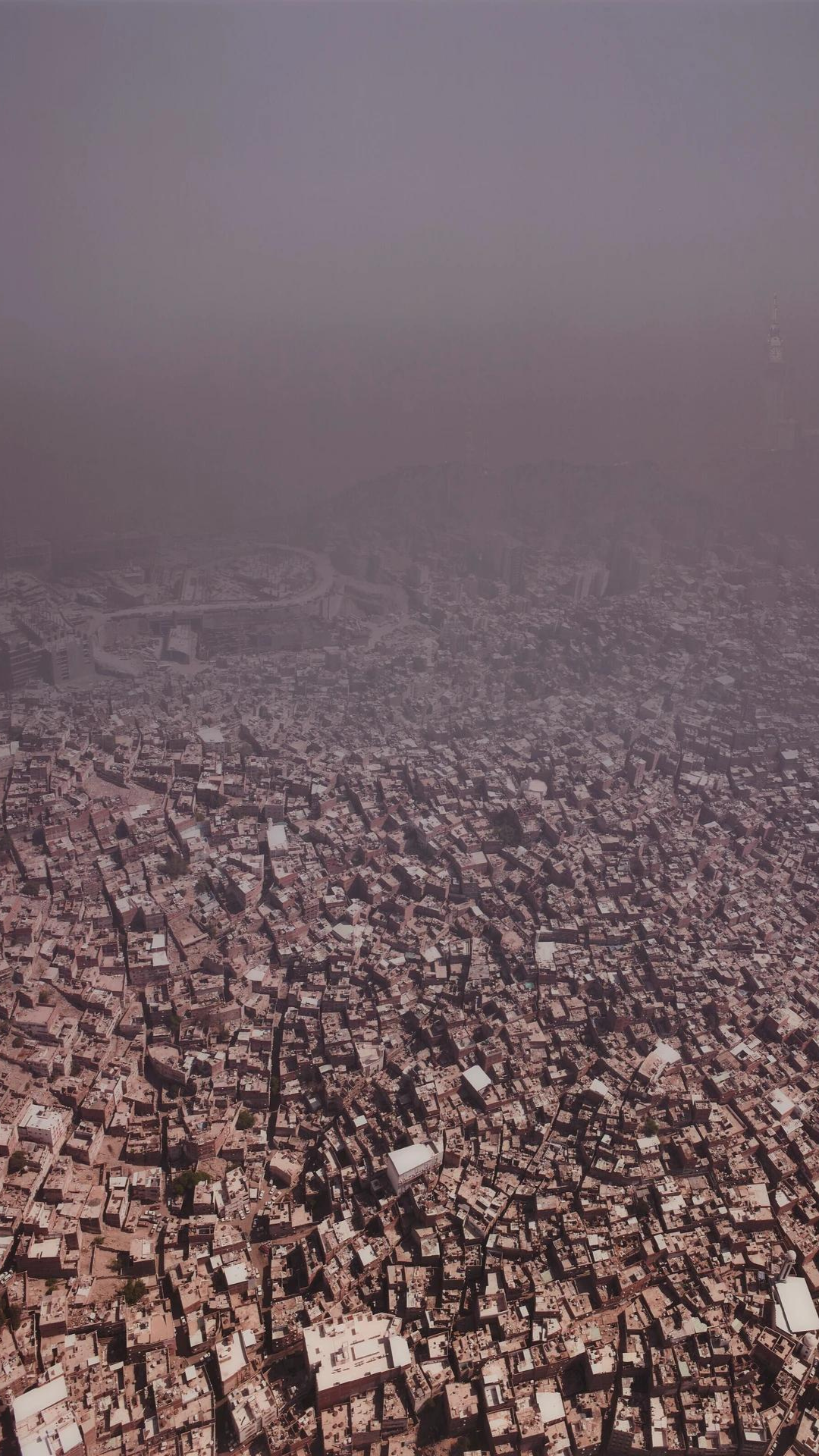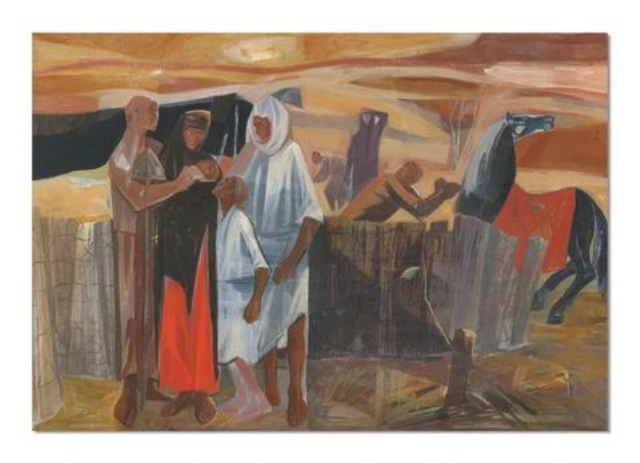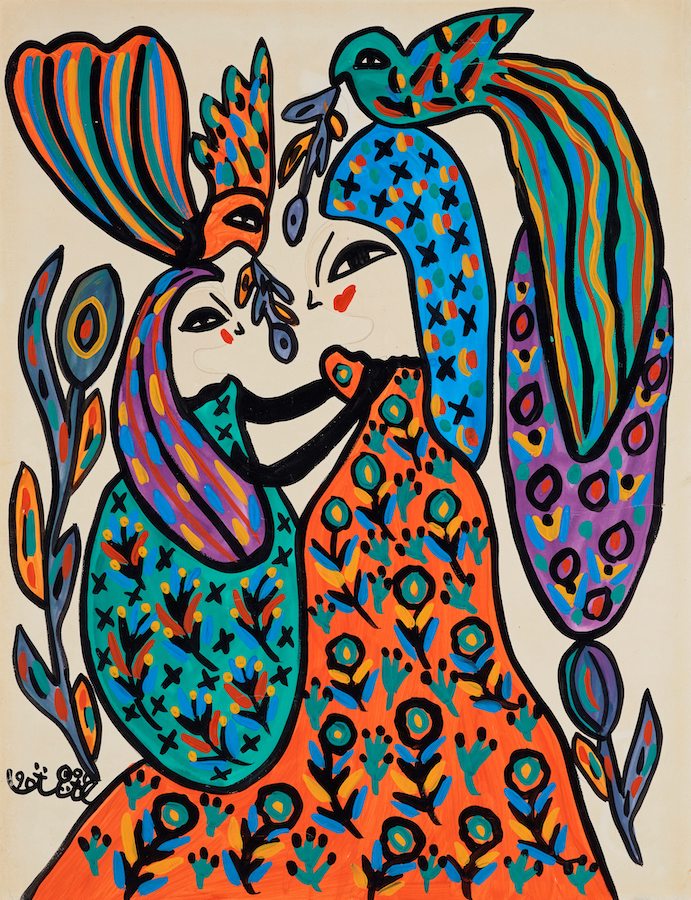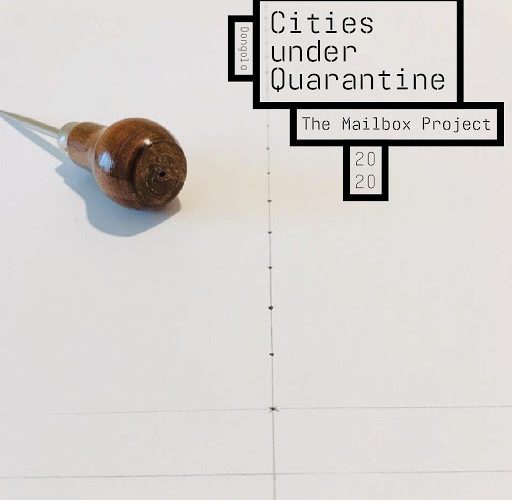Arts & Culture
11.15.2023
Arab art front and center in Christie’s exhibition in London

The collection presented last week by Christie’s in London, comprising 58 works, put the spotlight on artists from the Middle East and North Africa, underlining the creative impetus and artistic diversity of the Arab world.
Shakir Hassan Al-Said
Shakir Hassan Al-Said (1925-2004), Iraqi painter, sculptor and writer, is an emblematic figure in the history of art in Iraq. Born in Samawah, Al-Said played a fundamental role in the advent of modern art in Iraq. After graduating in social sciences in 1948 and painting in 1954, he co-founded the Baghdad Modern Art Group in 1951 and the One Dimension Group in 1971, making a lasting impact on the Iraqi art scene.

Shakir Hassan Al-Said ‘Untitled’
Ahmed Mater
Born in 1979 in Tabuk, Saudi Arabia, Ahmed Mater trained as both a doctor and an artist. His “Desert of Pharan” series, including the emblematic works “Human Highway” and “Human Highway (Mina)” from 2012, captures the rapid development and transformation of Mecca. Produced over five years, this series of photographs and films documents the changes in Islam’s holiest city, exploring the impact of modernisation and globalisation.

Ahmed Mater ‘From the Real to the Symbolic City’
Mahmoud Sabri
Mahmoud Sabri (1927-2012), born in Baghdad, is a major figure in modern Iraqi art. After studying social sciences in England and working in banking, Sabri devoted himself fully to painting. He was a founding member of Jum’at al Ruwwad (The Avantgarde Group) in 1950, inspired by Mesopotamian art and Baghdadite poetry of the 12th and 13th centuries. His works from the 1960s, such as “Rural Family”, reflect a crucial moment in Iraqi history, marking an important point of departure from other figures on the Iraqi art scene. “Rural Family” is characterised by earthy colours and details the life of rural communities in Iraq. Sabri also wrote a manifesto on quantum realism, a scientific method applied to art, and continued to develop this idea until his death.

Mahmoud Sabri ‘Rural Family’
Sultan bin Fahad
Sultan bin Fahad, born in 1971 in Riyadh, Saudi Arabia, is a contemporary artist who critically explores expressions of Islam and Saudi identity. His “Holy Economy” series, created in 2021, reflects the commercialisation of religious artefacts. The series includes works such as “Trust”, “Prayer Room” and “Manasik II”, using materials such as fabric, plastic beads and neon. His art offers a poignant reflection on the intersection of culture, religion and consumerism.

Sultan bin Fahad ‘Mosques’
Abdel Hadi Al Gazzar
Abdel Hadi Al Gazzar (1925-1966) was an Egyptian painter known for his use of social commentary in his art. Born in Alexandria, he moved to Cairo in 1940 and was influenced by the Contemporary Art Group, founded in 1944. Gazzar graduated from the Cairo School of Fine Arts in 1950 and held his first solo exhibition in 1951. He studied and worked in Rome, graduating from the School of Art and Restoration in Rome. Gazzar is famous for his criticism of modernisation by the Egyptian government and has participated in numerous national and international exhibitions. His political involvement in his art led to him and his mentor Hussein Youssef Amin being arrested during an exhibition by the Contemporary Art Group.

Abdel Hadi Al Gazzar ‘Abstraction’
Hassan Hajjaj
Hassan Hajjaj, born in Morocco in 1961, is an artist who lives and works between London and Marrakech. His diverse body of work, influenced by his North African heritage and London’s vibrant urban culture, encompasses photography, installation, performance, fashion and interior design. Hajjaj’s work is characterised by a unique fusion of high-end fashion, knock-off brands and popular culture, often framed by motifs made from mass-produced objects.

Hassan Hajjaj ‘Eyes on Me’
Baya Mahieddine
Baya Mahieddine (1931-1998), an Algerian artist, did not conform to any specific artistic genre, but her work is often described as surrealist, primitive, naïve and modern. Baya’s paintings, often characterised by vibrant colours, women in decorative clothes and imaginative animals, evoke a sense of joy and community. Her art was recognised from the outset, with her first exhibition at the age of sixteen in Paris, attracting the attention of artists such as Picasso and André Breton.

Baya ‘Untitled’
Youssef Nabil
Youssef Nabil, an Egyptian artist born in Cairo in 1972, has built a notable career in photography since 1992. Influenced by the golden age of Egyptian cinema, Nabil’s work is known for its ethereal aesthetic, often employing a hand-colouring technique reminiscent of old technicolour films. His art explores themes of memory, identity and cinematic narrative.

Youssef Nabil ‘Untitled’
popular

